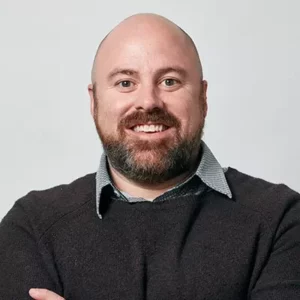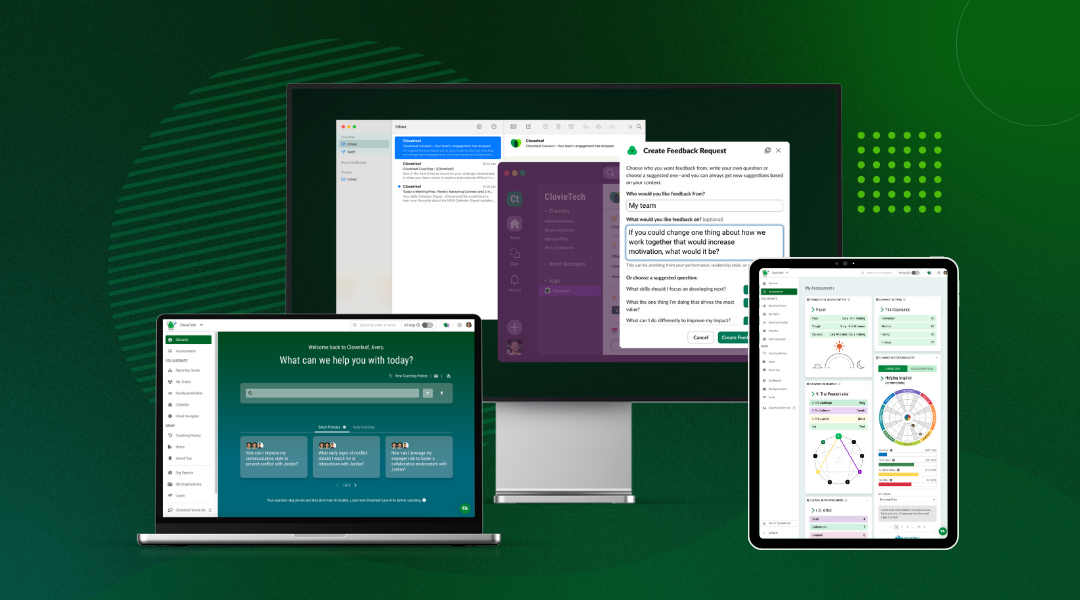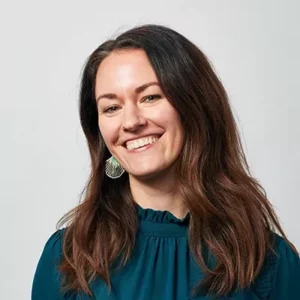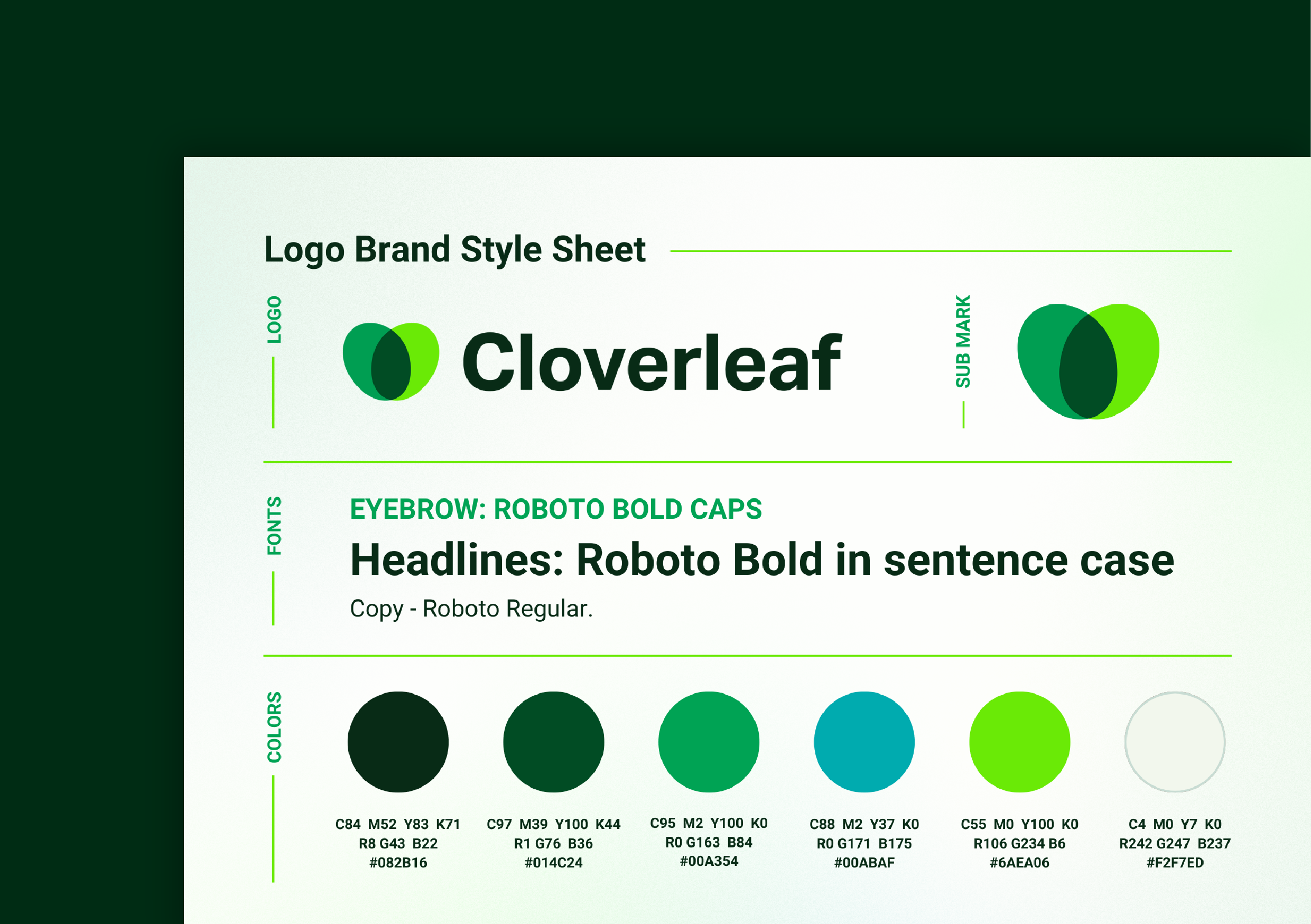HR teams today are expected to deliver personalized, scalable, and seamless employee experiences—without adding more complexity or headcount. But the very systems built to support those goals are often the biggest barrier.
Most enterprise HR stacks have grown bloated and fragmented. With siloed COEs, disconnected tools, and a growing backlog of AI-powered solutions, leaders are left wondering how to drive meaningful impact without overwhelming their teams.
Workday remains a critical foundation—the system of record for people data, transactions, and compliance. But to meet the needs of today’s workforce, Workday AI integration must evolve beyond basic workflows. HR leaders need to rethink how Workday connects to coaching, learning, and cross-functional experiences that actually move the needle.
Get the free guide to close your leadership development gap and build the trust, collaboration, and skills your leaders need to thrive.
Why HR Tech Feels Fragmented (Even When You Have Good Tools)
The traditional approach to HR technology was built for process control, not people enablement. It focused on consistency, compliance, and automation—but fell short on adaptability, personalization, and strategic value.
Here’s what that often looks like today:
- COEs manage disconnected slices of the employee journey—each optimizing their own domain, often at the expense of the whole.
- Tools are underutilized or overlapping, with unclear ownership and inconsistent user experience.
- AI is bolted on as an afterthought, not integrated into workflows or connected to outcomes.
It becomes a patchwork of systems that fails to deliver on the promise of transformation. Employees still feel invisible. Managers are overwhelmed. And HR is stuck reacting instead of leading.
Make Team Development More Impactful

The Biggest Barriers to Great HR Aren’t Tech—they’re Structural
Even in organizations with modern HR systems, the biggest blockers to transformation aren’t always technical—they’re structural. Silos form not just between departments, but within HR itself. Different COEs—like talent acquisition, L&D, and HR operations—often define and execute the same processes differently, leading to fragmented experiences and dropped handoffs.
One clear example: onboarding. Who owns it? Talent acquisition might claim it through pre-boarding, while L&D might say it belongs in development. But without a unified owner or shared framework, the employee gets a disjointed experience—and valuable context is lost before they even start.
This is more than a process flaw—it’s a culture problem. When data, tools, and responsibilities live in silos, it’s nearly impossible to deliver personalized coaching, integrated feedback, or cohesive growth plans that span the employee lifecycle.
Over the last 12 to 14 months of implementing Cloverleaf, we’ve started to see some silos fall… more cross-organization collaboration… that’s just the beginning. 💬 Kevin Mills, INSP
When teams can better understand each other—and leadership has visibility into who people are and how they work—collaboration becomes easier, culture becomes cohesive, and retention improves.
Silos don’t just block efficiency. They block trust, alignment, and the very outcomes HR is tasked with improving.
A Smarter Way to Build on What Workday Already Does Well
For many HR leaders, the instinct is to buy or build new tools to solve every emerging challenge—especially when AI enters the conversation. But layering new solutions on top of an already complex system often creates more fragmentation, not less.
That’s why organizations like GE HealthCare are taking a different approach: Workday first.
Rosellen Beck, Head of HR Technology and AI Enablement at GE HealthCare, shared that after GE’s corporate split, they inherited a tech stack designed for a massive conglomerate—not a streamlined healthcare business. Rather than starting from scratch, they audited their Workday environment to ask three key questions:
- Can Workday do it?
- Should Workday do it?
- Is Workday the right experience for this use case?
This considerations allowed them to consolidate vendors, reduce compliance risks, and streamline operations. It also provided a clean foundation for layering smarter, more human-centric solutions—like personalized coaching, skills mapping, and AI-driven insights—on top.
They invested in reworking security models, time and attendance, and talent processes directly within Workday. For example:
- Payroll was brought fully into Workday for better audit readiness
- Their talent lifecycle model was redesigned to reflect how the business actually works, not how the system defaulted
- Clunky 360 feedback was removed and replaced with facilitated, contextual conversations
In short, the platform became a launchpad for strategic evolution, not just a transactional engine.
💡 You can’t build a future-ready organization with legacy HR structures. — Rosellen Beck, Global HR Technology and AI Strategist
But GE HealthCare didn’t stop at process optimization—they used Workday’s simplification as a catalyst for rethinking how HR itself was structured and how change could be led cross-functionally.
Rosellen described their approach as “blowing up” traditional COEs and shared services, challenging whether HRBPs or People Ops teams should own development. It wasn’t just about streamlining tools—it was about building cultural readiness for transformation.
When Workday is used as a unified system of record—not a siloed set of features—it creates the data integrity and process backbone needed to power everything else: learning, coaching, feedback, planning, and more.
Visible Skills Data = Better Coaching, Planning, and Mobility
Skills-based talent management is one of the most talked-about priorities in HR today—but it’s also one of the most misunderstood. Too often, companies wait until they have a fully defined taxonomy, airtight governance, and clean data before launching anything at all.
GE HealthCare did the opposite—and it worked.
Rather than over-engineer a skills framework from the top down, they simply turned skills on in Workday. Employees were encouraged to self-report their skills—without validation, without structure, and without fear of doing it wrong. It was intentional. The goal wasn’t perfection—it was visibility.
And what they found was game-changing:
The skills employees said they had didn’t match what the business expected.Job profiles didn’t reflect the real skills needed to perform effectively.Learning paths weren’t aligned to either.
These gaps created instant value. Instead of investing months in design, GE had real data to spark real conversations: How are we defining success in key roles? Are we training for what we actually need? Where are our blind spots in succession planning?
Skills data didn’t need to be perfect to be powerful—it just needed to be surfaced.
💡 Pro Tip: GE began by piloting this strategy with a single business unit. By tying Workday’s native dashboards to grassroots mapping work, they created feedback loops between actual needs, stated capabilities, and strategic learning.
As Rosellen noted, the outcome wasn’t just a cleaner skills database. It was a better way to:
- Spot hidden talent and capabilities
- Prioritize role-specific learning and coaching
- Enable the business to co-own the strategy—not just HR
This is the future of skills: visible, conversational, and iteratively refined—not frozen in policy documents.
AI Connects the Dots—Workday Holds the Data, Cloverleaf Delivers the Coaching
AI is often hyped as a game-changer for HR—and it can be. But only when it’s used to make the employee experience simpler, faster, and more human—not just more automated.
At GE HealthCare, AI isn’t seen as a shiny dashboard. It’s being deployed to solve real-world workflow problems: how to reduce friction, enable proactive nudges, and help managers focus on people—not process.
Roslin described their approach as a “bot of bots” strategy: connecting Microsoft Copilot, ServiceNow, Salesforce, and Workday into one coordinated AI layer. This system isn’t just reactive—it’s designed to anticipate needs:
- Surfacing mid-year review reminders based on calendar activity
- Drafting check-in feedback based on goals, meetings, and priorities
- Identifying lagging sales metrics and suggesting coaching strategies
This kind of proactive AI creates time, clarity, and focus. Instead of waiting for HR reports or login prompts, employees get relevant coaching in the flow of their work.
Rather than an isolated assessment, I get a feel for the team from a much more holistic perspective… Cloverleaf really works to address specific team issues in particular. -💬 Erin Mires, Galen College of Nursing
Galen’s team is using Cloverleaf’s behavioral insights and AI-driven prompts to design development plans tailored to real team dynamics, not generic frameworks. By layering in assessments like DISC, Enneagram, or 16-types, they’re able to coach teams with specificity—without spending hours on analysis.
This is the sweet spot: Workday provides the structure and people data. AI connects the dots. Cloverleaf delivers coaching that lands.
This mentality can lead to a more personalized, scalable way to support managers and enable better conversations—without adding more tools or process.
Cloverleaf Is the Coaching + Personalization Layer for Workday
Workday is powerful—but it wasn’t designed to be personal. It excels at capturing people data, executing transactions, and enforcing compliance. What it needs is a way to bring that data to life through behavioral insight, human connection, and real-time coaching.
Cloverleaf acts as a personalization and coaching layer on top of Workday—helping organizations turn raw data into daily impact. Through seamless integrations (via Workday Extend or Built-on Workday apps), Cloverleaf connects directly to the systems HR already uses, enhancing—not replacing—existing processes.
Here’s how it works:
- 🔄 Skills Inference: Cloverleaf can suggest skills based on assessment data and feedback, enriching Workday profiles without requiring a new system or process.
- 💬 AI Coaching Nudges: Delivered through Slack or Teams, Cloverleaf provides
proactive, personality-informed insights to help managers lead more effectively. - 📈 Feedback Quality Boosters: Cloverleaf’s AI helps employees craft better feedback based on the recipient’s communication style, increasing psychological safety and clarity.
- 🧠 Integrated Development Plans: L&D teams use Cloverleaf to embed team dynamics and reflection tools into individual or team development journeys—without needing to leave their flow of work.
From health systems to higher education to media companies, organizations are using Cloverleaf to:
- Improve retention
- Reduce team turnover
- Enable distributed collaboration
- Coach new managers on real-world dynamics—not just abstract models
And with Workday as the backbone, Cloverleaf ensures every insight is grounded in source data, system-connected, and privacy-safe.
A Practical Path to People-Centered HR
The future of talent strategy isn’t about buying more tools—it’s about connecting the dots between the systems you already trust and the people you’re trying to serve.
Workday provides the structure. Cloverleaf brings the personalization. AI connects the two.
Together, they create a scalable, people-centered approach to HR—one that replaces disconnected systems and reactive processes with proactive coaching, skills visibility, and real-time enablement.
Transformation doesn’t require a 5-year roadmap. It starts with:
- Turning on visibility, even before governance is perfect
- Empowering teams to move fast with coaching nudges—not more training
- Using AI to reduce friction, not add complexity
- Measuring outcomes that matter: alignment, trust, performance, and growth
You don’t need to build it all yourself. You just need the right foundation—and the right partner to bring it to life.
Want to see what Cloverleaf looks like inside your team’s day-to-day?
Take a self-guided tour of Cloverleaf and experience how real-time coaching shows up in the moments feedback matters most.
🙋 FAQ
Q: Isn’t turning on skills without governance risky?
A: Not if your goal is insight. GE HealthCare’s approach shows that visibility leads to alignment. Governance can follow—not precede—adoption.
Q: Do I need Workday Extend to use Cloverleaf?
A: No. Cloverleaf offers both Built-on Workday apps and external integrations, depending on your Workday configuration.
Q: Can I use Cloverleaf without Workday?
A: Yes. Cloverleaf operates independently or as an enhancement to existing HRIS systems, including Workday.
Q: How is Cloverleaf different from traditional L&D or feedback tools?
A: Cloverleaf is the only science-backed AI coaching experience—so every nudge is tailored to how people actually think, work, and collaborate. It’s also fully customizable to your org’s leadership models and built into one platform, not bolted onto another. The result? Daily coaching that feels personal, reflects your culture, and actually drives behavior change.







